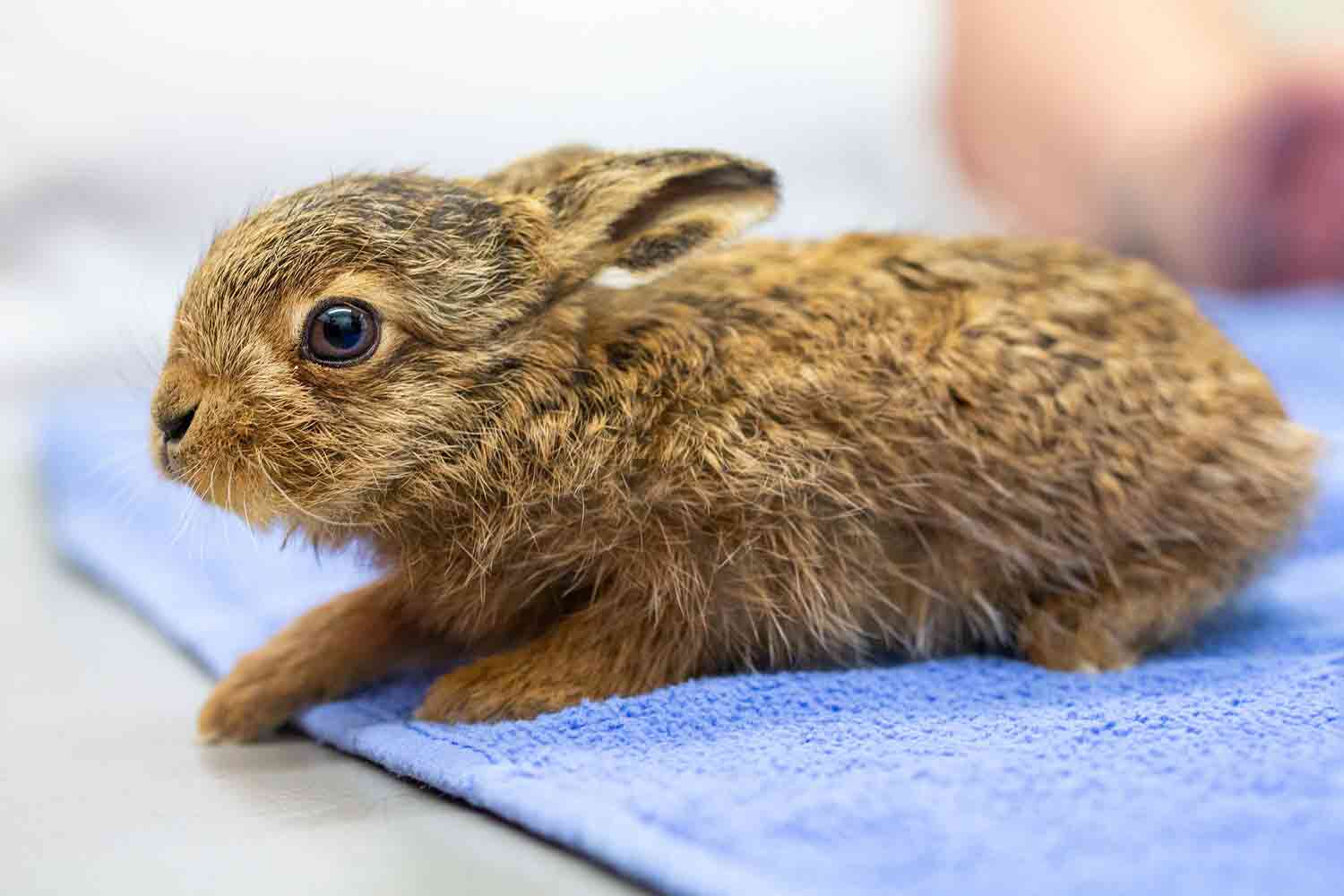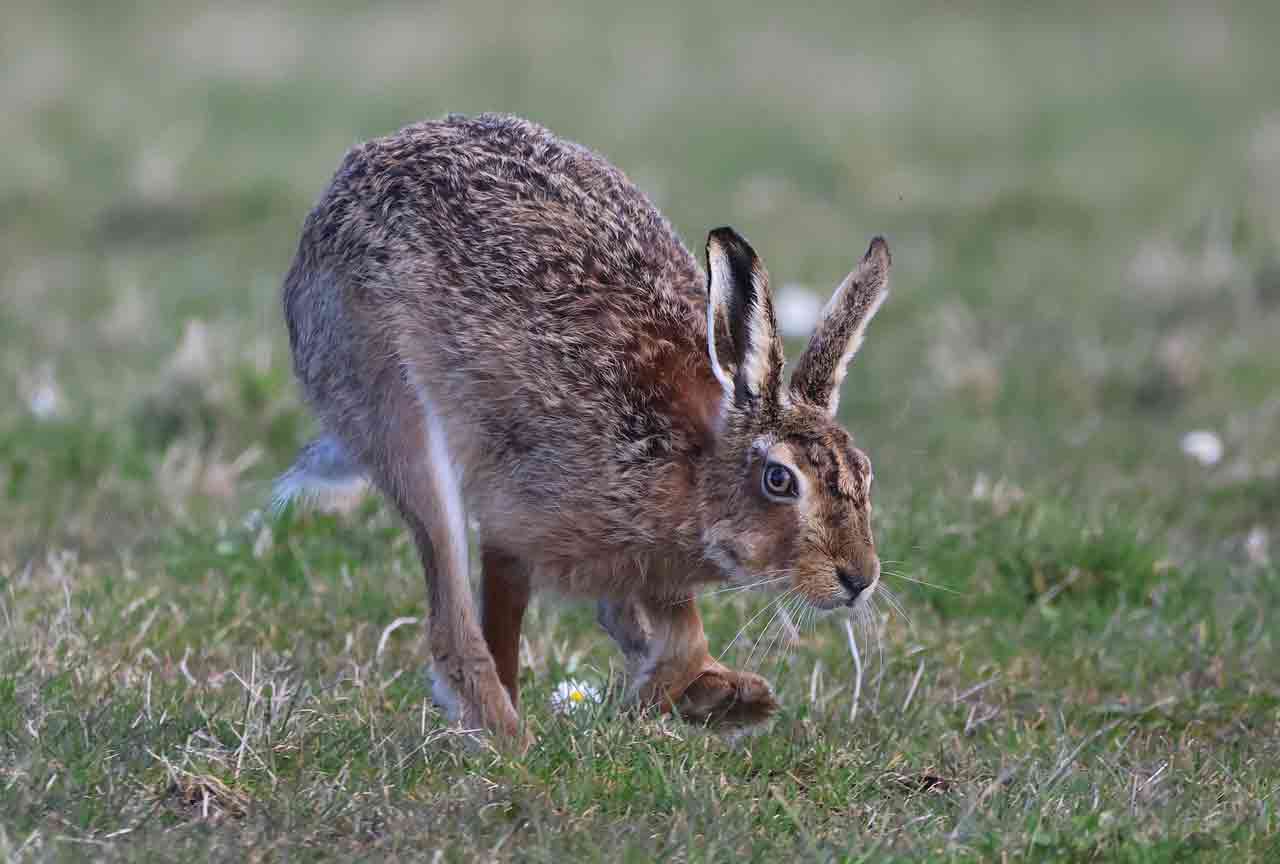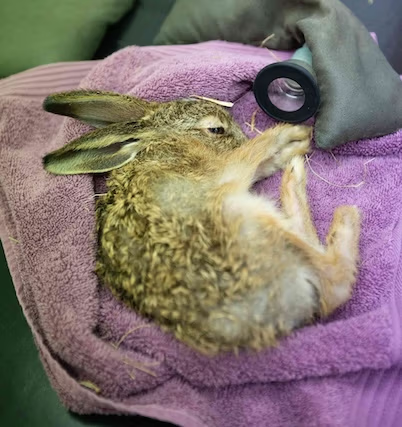Brown Hare
Lepus europaeus
Life History
Length: 50-70cm
Weight: 2-5kg
Diet: exclusively herbivorous.
Average Lifespan: 2-4 years
When to see them: All year round
UK population: less than 800,000
UK conservation status: Introduced, but naturalised species.

About
Hares are members of the family Leporidae in the order Lagomorpha.
They are staples of the great British countryside, but hares are not an original native species. Hares were introduced by the Romans and are now considered naturalised and can be found throughout the UK.
Did you know:
Although hares and rabbits look similar, they are, in fact, separate species. Hares are bigger than rabbits, have longer ears, and are less social than bunnies.
Behaviour
Hares can most commonly be found on open farmland, grassland habitats and at woodland edges. Unlike rabbits, hares do not dig burrows, but instead find refuge in ‘forms’, shallow depressions in the ground or grass. During the breeding season, males and females can be seen fighting or “boxing”, and using their strong hind legs to rear up, or run across fields, often in a zigzag pattern.
Breeding takes place between February and September, with the gestation period lasting 41-42 days. A female can rear 3 to 4 litters a year, each of 2 to 4 young. The young are known as leverets, and in contrast with rabbit kits, they are born fully furred, with their eyes open and are left above ground in the forms. Once a day, for the first four weeks of their lives, the leverets gather at sunset to be fed by the female, but otherwise they receive no parental care. This avoids attracting predators to the young at a stage when they are most vulnerable.


How you can help
There are a number of simple ways you can help hares.
- Hares like long grass and meadows to hide in; allow some wild grasses and flowers to grow in areas of your garden.
- As hares favour farmland and arable fields, farmers can improve cover and grazing conditions by maintaining and creating hedgerows and small woodlands.
- Use areas with the natural ingredients of wild bird mix, like pollen and nectar, and grass areas to create cover and food for hares.
- Hares need quiet, undisturbed cover for raising leverets.
Frequently Asked Questions
I've found an injured hare
If the hare is approachable, using a thick towel, pick the animal up and place it in a secure carrier or box, and contact your nearest wildlife rescue. If out of hours take the animal to your nearest vet. All vets have a duty of care to admit wildlife at no cost to members of the public.
I've found a baby hare above ground
Hares and baby hares, known as leverets, live above ground, they do not nest in burrows or warrens. The parents will also leave the leveret for long periods of time. If the leveret looks un-injured and is in a crouched, scared position, it is likely its parents are close by.
If the leveret seems lethargic or has visible injuries, please place it into a warm box or carrier and contact your local wildlife rescue.